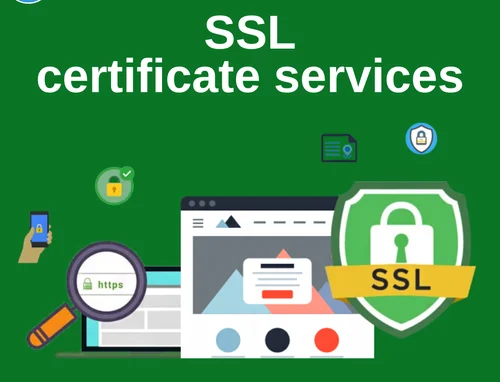Comprehensive SSL Monitoring Strategies: How to Safeguard Your Website and Enhance Online Security
A Complete Guide to SSL Monitoring for Website Security

Table of Contents
Introduction
In an era where online security is more critical than ever, SSL (Secure Sockets Layer) monitoring has emerged as a vital practice for protecting websites and their users. SSL certificates encrypt data exchanged between a website and its visitors, but maintaining their effectiveness requires more than just installation. Regular monitoring ensures that SSL certificates remain valid, secure, and properly configured.
This guide provides an in-depth look at SSL monitoring, covering its significance, implementation strategies, common challenges, and future trends. Whether you’re a website owner, IT professional, or security administrator, understanding and utilizing it will help you safeguard your digital assets and build user trust.
Understanding SSL Monitoring
What is SSL Monitoring?
SSL monitoring involves continuously overseeing the status and functionality of SSL certificates on a website. SSL certificates are crucial for encrypting communication between a user’s browser and the web server, protecting sensitive information such as login credentials and payment details. Monitoring ensures these certificates are always valid and operational, helping to avoid security breaches and maintain a secure online environment.
Key Components of SSL Certificates
To appreciate the need for it, it’s important to understand the key components of SSL certificates:
- Encryption: SSL certificates encrypt data during transmission, preventing unauthorized access.
- Authentication: They verify the identity of the website, ensuring users are connecting to a legitimate site.
- Integrity: SSL certificates ensure that data has not been tampered with during transit.
The Importance of SSL Monitoring
Enhancing Website Security
It is essential for maintaining robust website security. Without it, expired or misconfigured SSL certificates can leave data vulnerable to interception. Regular monitoring helps identify and address these issues before they become critical threats.
Maintaining User Trust
Users expect their interactions with websites to be secure. An expired or improperly configured SSL certificate can result in browser warnings, causing users to lose trust in your site. It helps prevent these issues, ensuring a seamless and secure user experience.
Preventing Financial Loss
For e-commerce websites, any disruption in SSL functionality can lead to downtime and lost revenue. SSL monitoring provides timely alerts about potential issues, allowing you to address them promptly and minimize financial losses.
Implementing SSL Monitoring
Choosing the Right SSL Monitoring Solution
Selecting the right SSL monitoring tool is crucial for effective oversight. Consider the following factors:
- Features: Look for tools that offer comprehensive monitoring, including expiration tracking, configuration checks, and alerting.
- Integration: Ensure the tool integrates well with your existing security infrastructure.
- Cost: Evaluate the pricing based on your website’s size and complexity.
Recommended SSL Monitoring Tools
- SSL Labs: Offers detailed analysis and grading of SSL certificates.
- Uptrends: Provides continuous monitoring with advanced alerting and reporting features.
- Wormly: Monitors SSL certificates and sends notifications about potential issues.
Setting Up Monitoring Alerts
To effectively manage SSL certificates, configure your monitoring tool to send alerts for:
- Upcoming Expiration: Notifications when a certificate is nearing its expiration date.
- Configuration Issues: Alerts about any misconfigurations or errors.
- Certificate Chain Problems: Issues with the trust chain or intermediate certificates.
Automating Certificate Management
Automate the renewal process to avoid the risk of certificate expiration. Many SSL monitoring tools offer automation features that integrate with certificate authorities to renew certificates automatically.
Conducting Regular Reviews
Regularly review monitoring reports to ensure all SSL certificates are functioning as expected. Look for patterns in the data that might indicate underlying issues or areas for improvement.
Common Challenges in SSL Monitoring
Handling Multiple Certificates
Large organizations often manage numerous SSL certificates across various domains and subdomains. Using a centralized monitoring tool can simplify the management of multiple certificates, providing a unified view of their status.
Trust Issues with Certificate Authorities
The reputation of certificate authorities (CAs) can impact the trustworthiness of your SSL certificates. SSL monitoring tools should help you identify and address potential trust issues with CAs.
Ensuring Prompt Response to Alerts
Timely response to alerts is critical. Establish a clear process for addressing SSL-related issues and assign responsibilities to ensure quick action when alerts are received.
Future Trends in SSL Monitoring
Increased Automation and AI Integration
As technology advances, SSL monitoring will likely incorporate more automation and artificial intelligence. These advancements could include predictive analytics for identifying potential issues before they arise and more sophisticated automation for certificate management.
Enhanced Integration with Security Platforms
Future SSL monitoring tools may offer better integration with other security solutions, such as web application firewalls and intrusion detection systems. This integration will provide a more comprehensive approach to website security.
Advanced Reporting and Analytics
Expect more advanced reporting features that offer deeper insights into SSL performance and potential vulnerabilities. Enhanced analytics will help organizations make more informed decisions about their security posture.
Conclusion
SSL monitoring is a crucial aspect of maintaining a secure and trustworthy website. By regularly overseeing your SSL certificates, you can protect user data, avoid disruptions, and uphold your brand’s reputation. Implementing effective SSL monitoring practices ensures that your website remains secure and reliable in an increasingly complex digital environment.
Call to Action:
Ensure your website’s security and trustworthiness by investing in a robust SSL monitoring solution today. Regularly review and update your SSL certificates to stay ahead of potential issues and maintain a secure online presence.




